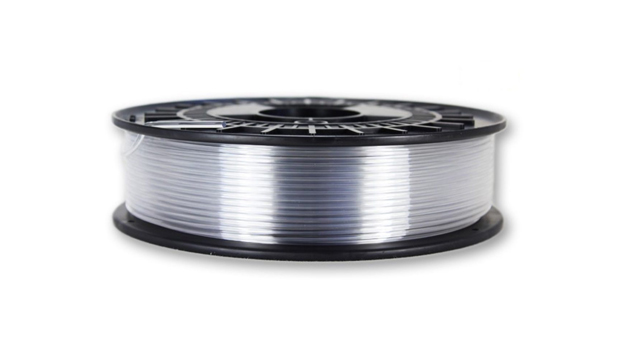PETG is a variation of the highly popular Polyethylene Terephthalate (with a glycol modification) (PET). PET is one of the most common plastics in the world today and is being used for food containers, water bottles, and even clothing fibres. Its high mechanical strength, resistance to extreme temperatures, and ability to restrict moisture, has made it and its several variations useful for the food industry, as thermal insulation material, or as precursors for engineering resins. As a 3D printing filament, PETG plastic has proven its worth as a durable material that is easy to use. Figuratively speaking, it combines the most useful characteristics of ABS filament (the rigidity and mechanical properties for functional parts) with the ease of printing that PLA filament affords.
In short this is a really tough material, it’s extremely durable and prints without odour. Once you’ve dialed in the correct print settings, it prints nicely too. Users report similar finish quality to PLA.
Here are the main benefits to printing with this material and common PETG filament properties:
- Very durable, it’s more flexible than PLA or ABS, but also a little softer. You’d have a hard job breaking it in half, so if an ‘unbreakable’ case or enclosure is what you need, PETG trumps pretty much everything (except, Nylon 12).
- It has very low shrinkage, and therefore no warping. Ideal for printing big stuff.
- PETG is also very strong, it’s not brittle but can be scratched more easily than ABS which is harder.
- PETG plastic makes a terrible support structure, because it sticks so well. But because it sticks so well, layer adhesion is fantastic, so prints come out strong.
- It sticks well to the print bed too, so be careful when you’re removing it after printing.
- It has a great chemical resistance, along with alkali, acid and water resistance.
- Odourless when printing.
Typically Polyethylene filament is supplied in a range of translucent colours, and prints with a nice glossy finish.
It makes it ideal for printing anything that needs to be shatterproof or translucent. Many are taking the leap from using PLA or ABS to just using PETG.
Specifications:
| Filament Diameter | 1.75 mm, 2.85mm |
| Density | 1.38 g/cm³ |
| Tensile Strength | 2000 MPa |
| Tensile Elongation At Break* | 120-190% |
